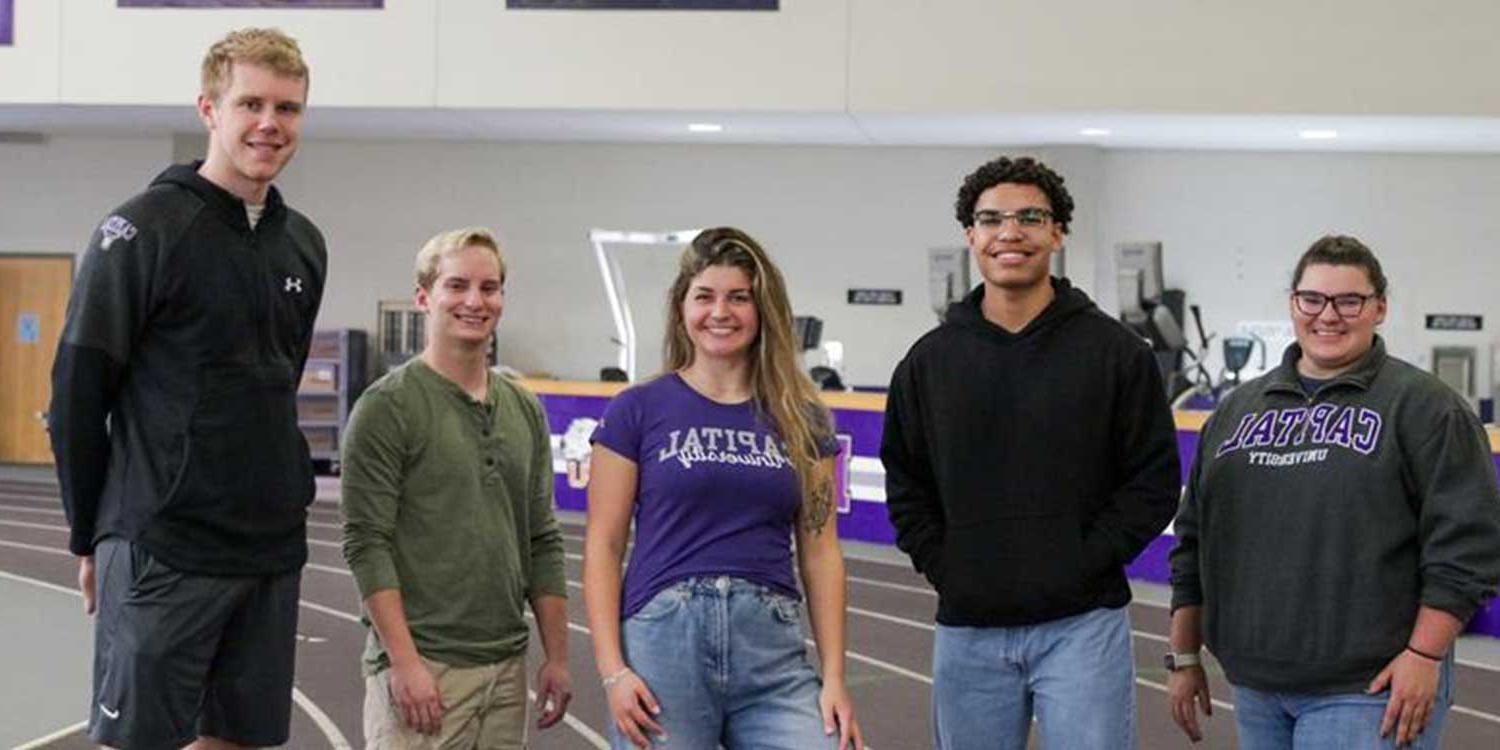Armed with a thermal imaging camera, a team of students from health and sport sciences and biology set out to uncover how long-distance and sprinters shed excess heat after a run. The experiment focused on three distinct groups: long-distance runners, sprinters, and non-athlete controls. All participants were Capital students and ran an eight-minute mile on the indoor track, with thermal images and heart rate data collected before and after the run at five-minute intervals.
Led by Kimberly Heym, Ph.D., lecturer, biology, the student researchers—Lazaro Fuentes, Mia Sanchez, Sadie Weaver, Stevyn Butts, and Ryan Suever—formed a close-knit team.
“Students from exercise and sport science and biology were purposely invited to work together on this project,” said Heym. “I was extremely surprised that all five kids showed up every single time, on time, ready to go. It was the best five kids that I could imagine. We formed a true team.”
The team had two main hypotheses. First was that the long-distance runners would lose less heat from their skin’s surface, and the second hypothesis was that they would return to baseline quicker.
“We knew that the eight-minute mile was going to be a breeze for the long-distance runners. With the sprinters, we wanted to find out how they would react in the same situation because they are athletically fit, but they’re not trained for long-distance running, for that quick burst. What we found was that the sprinters actually acted more like our controls, compared to our long-distance runners,” said Fuentes.
“The long-distance runner’s body temperature didn’t drop quite as much. Sprinters and controls dropped the most. We think it’s because of their muscle composition. Sprinters have more fast switch muscle fibers for quick burst energy. When you’re running a long distance, you have to have endurance, that’s the slow switch muscle fibers. It really interesting to see that the sprinters struggled a lot more than we thought they would.”
Students used a thermal imaging camera to measure radiant heat loss. By analyzing thermal images, the student researchers tracked pixel changes in body temperature, noting the initial drop in skin temperature five minutes post-run.
“We took their heart rate and thermal imaging photos at baseline before they did the jog, directly after at time zero, five, 10, and 15 minutes after. We took a picture of the front and back of the torso just in standard anatomical position each time and then we were able to compare them,” said Weaver. “We all had different jobs. I actually recorded their heart rates at each time. Someone else took the photos, someone else was responsible for keeping everyone on timing at they did each lap.”
The interdisciplinary nature of the project was key to its success. The entire study was a collaborative experience, and each student brought a diverse skill set to the project.
“We all brought something different to the table. Mia is involved with track and field, so she was more involved with the pacing. She knew the details about how the actual run needed to go. With me and some of the other people in exercise science, we were good on the data collection. Our classes have a lot of emphasis on exercise tests, so it was cool we brought our own thing from what we have learned in our majors,” said Weaver. “It was really interesting to have real hands-on experience with an actual exercise study and apply it to what I’ve learned in classes with my major. It was just a really great opportunity.”
Fuentes presented the team’s findings at the Ohio Physiological Society meeting at Ohio University in September 2024, and Weaver will participate in the annual Symposium on Undergraduate Scholarship at Capital University.
For more information about health and sport sciences at Capital, visit http://kqo3.landaiztc.com/academics/health-and-sport-sciences/.
To learn more about biology at Capital, visit http://kqo3.landaiztc.com/academics/majors-and-minors/biology/.
